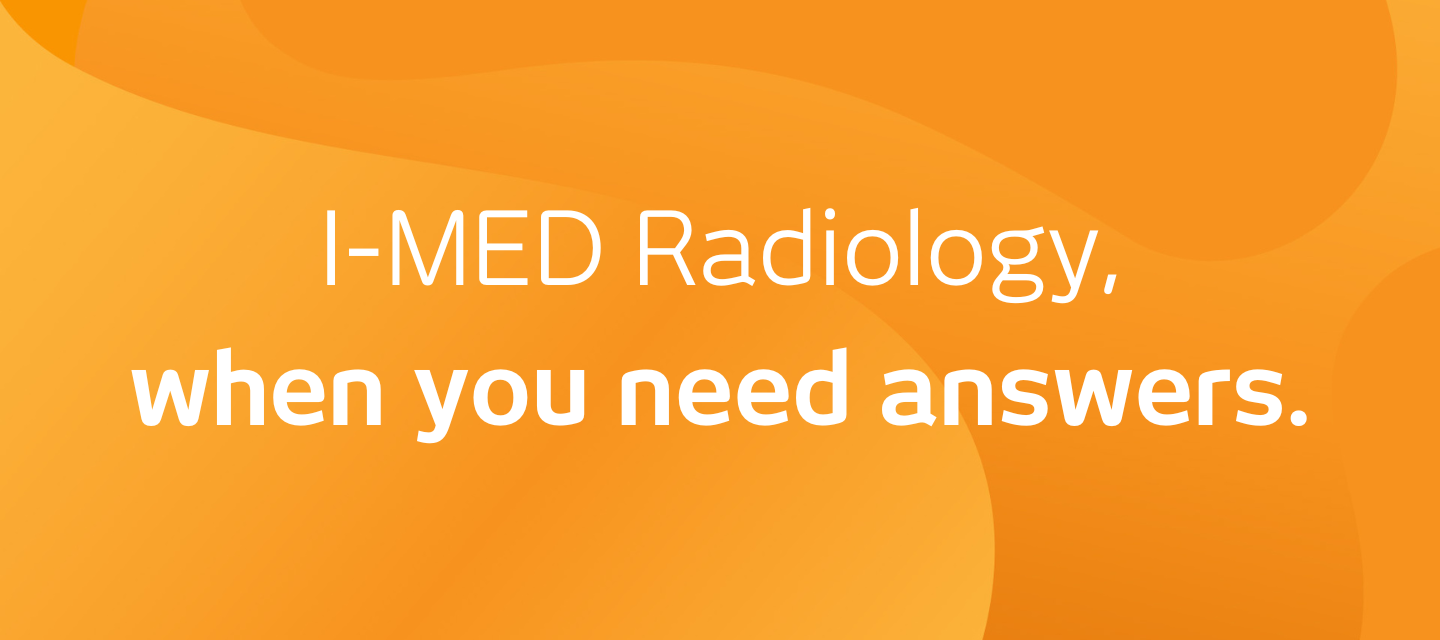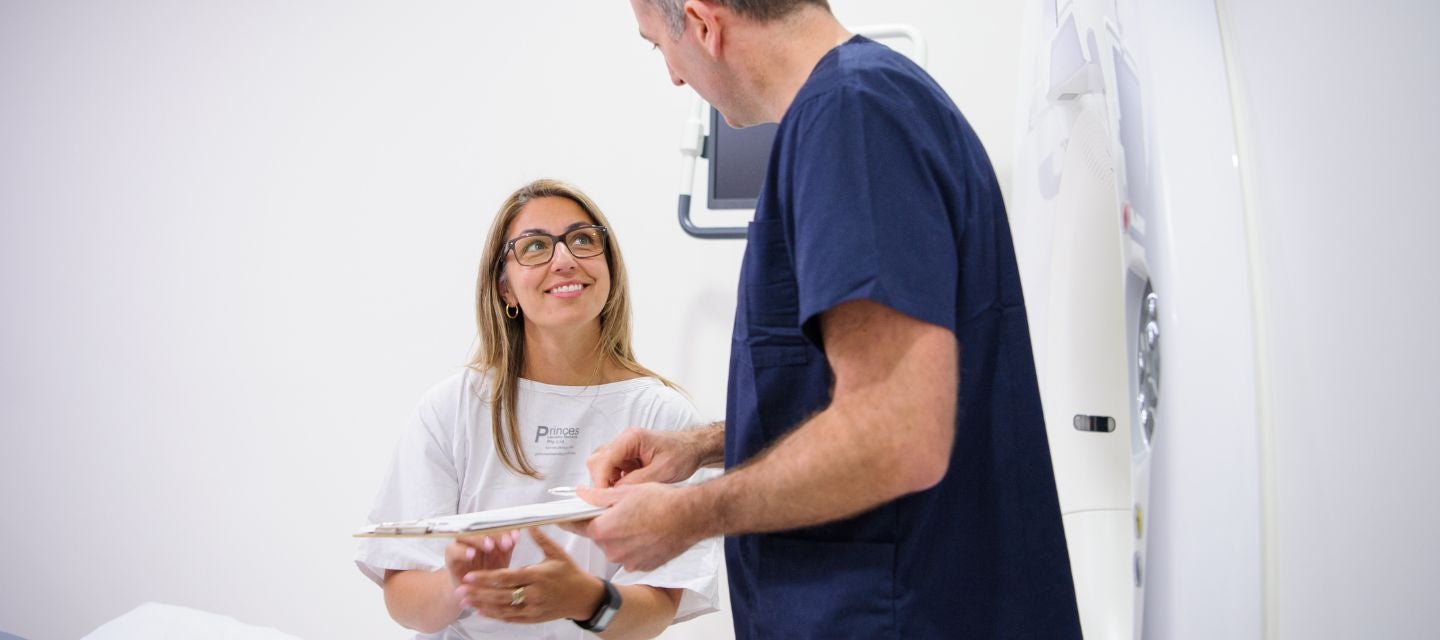
Facet joint injection
Facet joint injection
What is a facet joint injection?
The spine is made up of bones called vertebrae. At the front of the spine is solid bone, and at the back there is a bony canal, or channel. The solid bone is separated from the next bone by a disc. One vertebra is connected to the next vertebra at the back of the bony canal by pairs of facet joints on the right and left sides of the spine. These joints allow forward and backward bending, as well as side-to-side rotation. The joints also prevent one vertebra from slipping over the other.
An image guided facet joint steroid injection involves a radiologist (specialist doctor) using either x-ray guidance or a computed tomography (CT) scanner to guide the injection of a thin needle containing corticosteroid (or ‘steroid’) into one of these facet joints.
The injections are designed to decrease inflammation in the facet joint and will often reduce pain.
If you are on special drugs or have diabetes and are on insulin please take your usual medicine and diet as usual.
Why would my doctor refer me for facet joint injection? keyboard_arrow_down
Arthritis of the facet joint or strain of the joint from bending and twisting may lead to back pain in the area of the arthritic facet joint, muscle spasm and dull pain in the buttock, hip, groin or upper leg. Clinical examination may suggest that the facet joint is the cause or one cause of the pain symptoms.
An injection of corticosteroid into the facet joint may alleviate the pain by reducing inflammation of the joint. If the pain is suspected to come from a particular joint, but it is not certain which one (especially in older people who may have arthritis at a number of spinal levels), blocking the joint with anaesthetic confirms or rules out that particular joint as the cause. This can help planning for future surgery. If surgery is a consideration, facet joint corticosteroid injection may be used to relieve the pain before the surgery and can sometimes allow surgery to be delayed or avoided.
How do I prepare for a facet joint injection? keyboard_arrow_down
Because you will be lying on your stomach during the procedure and may be uncomfortable if your stomach is too full, it is advisable to limit food intake to a light meal only, up to 2 hours before the procedure. You should wear comfortable clothes that are easy to remove and leave jewelry at home, especially necklaces.
Please note that some of the disinfectant agents used during these procedures may stain light-coloured clothing. Please discuss any medical illnesses with your doctor before booking the recommended procedure.
When you make your appointment please let our staff know if you are on medication to thin your blood such as asprin, warfarin, clopidogrel, dabigatran, prasugrel, dipyridamole or asasantin. You may need to stop using or reduce your normal dose of any blood thinning medication a couple of days before your procedure. However it is important that you do not stop any of these medications or change the dose without consulting both the radiology clinic and your doctor. They will provide you with specific instructions about when to stop and restart your medication. A blood test may be required to check your blood clotting on the day of the procedure.
What happens during a facet joint injection? keyboard_arrow_down
A radiologist (specialist doctor) will explain and carry out the procedure using the X-ray or CT scan to find the site for injection.
You may be asked to change into a hospital gown, depending on the area of the joint to be injected. You will be guided onto an X-ray or a CT scanner table on a thin plastic mattress.
For the facet joint injection you will be required to lay face down on an X-ray table, if the injection is in the lower back one side of the body may be raised. For neck joint injections you may be placed on either your stomach or back.
If the injection is X-ray guidance a mark with ink will be made on the skin over the joint which is to be injected. If the injection is CT guidance, plastic tape with small metal markers attached to it will be taped onto the injection site.
The skin of your back is washed with antiseptic and then a fine needle is used to give local anaesthetic to numb the area. When the local anaesthetic is injected you may feel an initial sting, but the area will quickly become numb.
Once the local anaesthetic has taken effect the radiologist will guide the needle into the facet joint using the x-ray or CT scanner to assist. It is important to remain still during the procedure to ensure the needle is placed in the correct position. Once the needle is in the joint a combination of local anaesthetic and long acting corticosteroid will be injected into either the left or right facet joint. This injection may produce a dull ache for a few seconds.
Are there any after effects of the facet joint injection? keyboard_arrow_down
The area around the joint is expanded during the injection. This may irritate the joint further and the symptoms may be aggravated for a day or so before the steroid starts having its effect. Occasionally, numbness or weakness will occur in the arm or leg on the same side as the injection and you may temporarily experience some numbness in the injected area.
How long does the treatment last?
keyboard_arrow_down
The effect of the Facet Joint Injection varies for different people.
There may be relief for several months up to a year. It should be noted that the injection is a treatment for back pain and not a cure so it is unlikely that you will see a long term resolution.
For some people the Facet Joint Injection does not provide any relief.
How long does it take?
keyboard_arrow_down
The procedure itself usually takes approximately 15 minutes.
What are the risks?
keyboard_arrow_down
This is a very safe procedure and has lower risk than both the image guided epidural corticosteroid injection and image guided nerve root corticosteroid injection.
Occasionally people have an allergic reaction to the local anaesthetic, which may produce itching hives or, rarely, a more severe allergic reaction, as with an allergy to any medication.
Reaction to the corticosteroid is relatively common, and produces redness and flushing of the face and body, usually starting a few hours or the day after the procedure and lasting a few days, this is commonly referred to as ‘cortisone flare’.
Allergy to corticosteroid ranging from a mild rash to anaphylaxis is very rare, occurring in less than 1 in 250,000 patients.
Some patients may experience numb arm(s) or leg(s) which may occur if the anaesthetic mixed with the steroid leaks into the adjacent epidural space. This can last up to an hour and is uncommon.
Bleeding into the joint and joint infection are the more serious complications. These complications are extremely rare, as the procedures are always carried out under sterile conditions. If you experience any of the following symptoms within the first two weeks after your injection, you should seek medical advice:
- Fevers or night sweats
- Worsening pain beyond 5-7 days after your procedure
- Persistent or new weakness or numbness in your leg(s) (if you received your injection in your lower back)
- Persistent or new weakness or numbness in your arm(s) and/ or legs (if you received your injection in your neck)
- Loss of control of bladder or bowel function.
Bleeding into the joint is very uncommon, and usually requires no active treatment and can be managed with pain medication and follow up with your local doctor. Joint infection is also extremely rare, but is potentially very serious. It usually requires treatment with antibiotics. In very severe cases, an operation may be needed to remove the infected tissue, as well as a stay in hospital for antibiotics given intravenously (direct into the vein).
What are the benefits?
keyboard_arrow_down
After receiving the Facet Joint Injection you should experience a relief of pain.
This aids in management in organising appropriate physiotherapy and posture correction therapy.
Acute facet pain is very rapidly relieved and this relief may be long term, with approximately 80% of patients experiencing relief for 3 months or more.
Chronic facet joint related pain may be relieved for weeks to months. Identifying that a facet joint injection has provided relief from pain is a necessary first step for patients who are potential candidates for radiofrequency facet joint nerve blocks.
After care keyboard_arrow_down
After the facet joint injection you may feel some minor discomfort in the area injected. However, most patients will be pain free due to the local anaesthetic which has been injected. Patients are able to walk freely after the procedure and are observed in the clinic for 10 minutes. Following the observation, you may be discharged if you are feeling well.
Due to the potential anesthetic effects, you should not drive for the rest of the day.
The following day after you have received the injection you may return to work and gradually increase your activity, it is recommended you should minimise physical activity for 12 hours after the injection.
The radiologist conducting the injection will send your referring doctor a report, so please ensure that you make a follow up appointment with your referring doctor or health care provider to discuss your results.
How do I get my results? keyboard_arrow_down
Your doctor will receive a written report on your test as soon as is practicable.
It is very important that you discuss the results with the doctor who referred you so they can explain what the results mean for you.
Most results are normal. Occasionally, small changes are seen that need further review.
If your results are normal you will be able to return for routine screening (usually every 2 years). If your results are uncertain or show changes you may need to consider additional imaging (diagnostic mammogram, ultrasound, or biopsy) in discussion with your referring doctor.
Related procedures

This information has been reviewed and approved by Dr Ronald Shnier (I-MED Chief Medical Officer).
Related articles


Revolutionising patient pain assessment
Related procedures

This information has been reviewed and approved by Dr Ronald Shnier (I-MED Chief Medical Officer).
Related articles

Why I-MED Radiology

